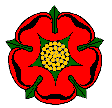 |
The
Parish of Blackpool |
 |
Growth of the County Borough of Blackpool
in the County of Lancashire
from 1500 to 1938
With thanks to Olive who compiled this history of Blackpool. Dates quoted are from various History Books of Blackpool and the Fylde, but chiefly from the Government Survey Book Amounderness, published in the year 1934.
To thoroughly understand the History of a District over a few Centuries you must know its Geography.
The first Map of the Fylde or Saxon for Field was published about the year 1500 and shows the Coastline to extend One Mile further out into Morecambe Bay than it does now, also two miles further out into the Irish sea at Rischall Point, receding to One Mile further out at halfway down the coast (that would be Bispham), and continuing still one mile out until it reaches the mouth of the Ribble. The Map shows the River Wyre as a tributary of the River Lune, hence the name Lune Deeps.
Marton Moss was a swamp and a small brook drained from it running North West, called Spen Brook this was widened and deepened later to the Moss and renamed Spen Dyke.
This Brook or Dyke emptied into a pool situated in a large Depression about a mile (in those days) from the sea, and owing to the colour of the water was given the name THE BLACK POOL.
Further East was a lake running East and West for four and a half miles, by half a mile wide.
This had an overflow at the West end, this ran through what is now Marton, and joined the Spen Brook in the vicinity of what is now known as Spen Corner, the junction of Waterloo Road, Ansdell Road and Hawes Side Lane. The Lake was Marton Mere and ran from about what is now East Park Drive to beyond Peel.
The Black Pool was situated in a hollow at the North end about the present Chapel Street or Princess Street and the South near Spion Cop end of the Football Field.
This Pool had an overflow through a small Gynn which ran through what is now Manchester Square to the sea.
There is no mention of Roman Occupation in any book that I have read, the nearest is Kirkham where the remains of a small Bath Building on the stump of the Roman Bath, were found in excavating at the beginning of the centurary.
There is also the Roman Road running through Kirkham and on towards Fleetwood to the Supposed Roman port of Portus Setantian, two miles out from the present Fleetwood. This road was afterwards called Daines Pad. This was the layout of the Coastal Strip of the Fylde in the Hundred of Amounderness.
The County of Lancashire was formed by the amalgamation of Six Hundreds, these being The Hundred of Lonsdale in the North, which takes in the North, which takes in Furness District including Lake Coniston and about Seven eights of Lake Windermere, Lancaster, Morecambe, nearly as far South as Pilling and across to the Yorkshire Border.
The Hundred of Amounderness, or Oak Covered Swamp, taking in Pilling and Over Wyre District across to the Yorkshire Boundary taking in the Bleasdale Fells, Garstang, in the South across County, cutting Preston out, but including Ashton on Ribble, and then following the river to its mouth.
The Hundred of Leyland, south of the river and including Southport and halfway across the Centre Strip of the County.
The Hundred of Blackburn, taking up the Eastern half of the Centre Strip. The Hundred of Salford which includes Manchester and the whole of South East Lancashire.
The Hundred of Derby in the South West Lancashire including Liverpool. The first mention of the Hundred of Amounderness is the year 661.
A Hundred is one hundred rouds of Cultivable land at that date when Cultivation was all by hand, and in batches over a large area including the rough land in between, which the Head Man of the district had to keep clear of outlaws and Merenders.
A Roud is equivalent to one and a half square miles.
The first mention of a Duke of Lancaster was in the year 1361.
| Blackpool Home & Contents | ©Lancashire OnLine Parish Clerks | Lancashire Home |